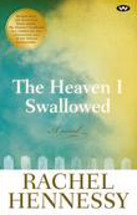The Heaven I swallowed by Rachel Hennessy

Wakefield Press, 2013. ISBN 9781862549487.
Recommended. The main character of this novel is Grace Smith, a
seemingly widowed and devout member of a Catholic parish, who
decides to take in a twelve-year-old aboriginal orphan named Mary.
Grace's ostensible aim is to train and educate Mary, so that she
would overcome 'the disadvantages of what she was, while never
.(.forgetting).. exactly what she was'. This sentence captures
precisely Grace's attitude. To be black, to be aboriginal was
shameful in her eyes and those of the white community.
However, Grace herself has lived a life of loss and abandonment. As
a child she experienced cruelty and neglect in a Catholic orphanage.
Moments of religious ecstasy and a vision of the Madonna did not
compensate for the lack of loving kindness. As an adult she was a
failure as a teacher, her baby was stillborn and her husband Fred,
rather than being dead, has abandoned her for a Japanese woman in
Japan. Grace's insecurities mean that she is not strong enough to
ensure that Mary is educated as she should be, and instead she
trains Mary as a domestic servant. Grace begins to love her, and
recognizes her own childhood reactions to cruelty in Mary. She
is appalled to learn that Mary's mother is alive and longing to see
her daughter. Ashamed but fearful of her own loss Grace does not
tell Mary. However, Mary finds out and runs away, leaving
Grace deserted again. Meanwhile Fred encounters racism in
Japan, where his child is looked down upon by the Japanese.
Penniless he is forced to return to Australia and by chance
encounters Grace. Given the chance to love again Grace accepts it,
but continues to look for Mary. The casual racist cruelties that are
dealt to Mary by all the white community are well captured, but the
characterization of Grace depicts a nuanced view of the situation
while not excusing it. The use of the first person narrative is
skilled as the reader clearly understands Grace's motives, and
understands Mary better than she does. All the characterizations are
strong and the claustropbobic atmosphere of the widows' circle in
the parish is particularly believable. The style is assured
and the reader is skilfully drawn into the story. The book is
recommended for all ages.
Jenny Hamilton